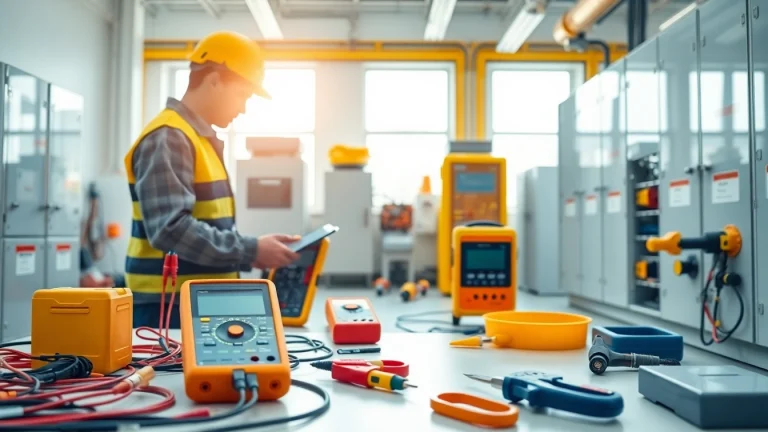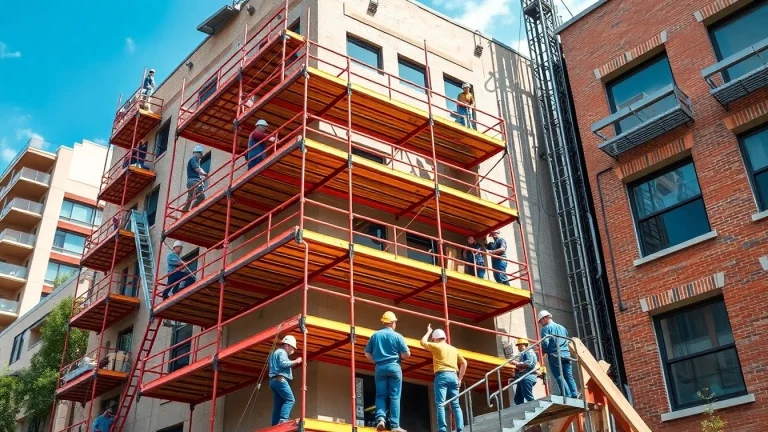
Choosing the Right Welding Jacket for Safety and Comfort
Understanding Welding Jackets
What is a Welding Jacket?
A welding jacket is a vital piece of personal protective equipment designed specifically for those who engage in welding activities. These jackets are constructed to shield welders from the various hazards associated with the welding process, including the intense heat, sparks, and spatter that can occur. Made from specialized materials, welding jackets provide burn protection, minimize exposure to hazardous conditions, and help maintain safety standards on the job site.
Importance of Safety in Welding
Welding is inherently risky, with potential dangers such as exposure to UV radiation, molten metal, and hot sparks. Safety in welding cannot be overstated; improper protective gear can lead to severe injuries, including burns and long-term damage to the skin and respiratory system. Hence, wearing appropriate welding jackets is critical for any welder—whether they are professionals in heavy industry or hobbyists—ensuring their safety while enhancing their performance. The right protective clothing not only safeguards the individual but also instills a sense of security to work effectively in a potentially dangerous environment.
Types of Materials Used in Welding Jackets
Welding jackets are made from various materials, each offering unique benefits depending on the welding process and the level of exposure to hazards. The most common materials used include:
- Flame-Resistant Cotton: This material is breathable and comfortable but offers adequate protection against sparks and spatter. Often used for light-duty welding.
- Leather: Highly durable, leather welding jackets provide superior protection from heat and flames. They are ideal for heavy-duty applications where exposure to high temperatures is a concern.
- Synthetic Blends: Some jackets are made from synthetic materials combined with cotton or other fabrics to enhance durability while providing flame resistance.
- Hybrid Materials: Incorporating both cotton and leather, hybrid jackets offer the benefits of flexibility along with enhanced protection.
Key Features of a Quality Welding Jacket
Flame Resistance Standards
A critical aspect of welding jackets is their flame resistance. Different standards govern the flame resistance of these jackets, including ASTM, NFPA, and OSHA guidelines. These certifications ensure that the jackets can withstand high temperatures and resist ignition, maintaining their integrity in extreme conditions. For example, many quality welding jackets are designed to meet or exceed the ASTM F1506 standard for flame-resistant clothing used in electric arc applications, offering an additional layer of protection that is crucial for welders.
Comfort and Fit Considerations
Comfort and fit are paramount when selecting a welding jacket. A poorly fitted jacket can restrict movement, leading to reduced efficiency and increased risk of accidents. Look for jackets that feature:
- Adjustable Features: Many jackets include adjustable cuffs and waistbands for a tailored fit that accommodates layering beneath the jacket.
- Breathable Fabrics: Fabrics that wick moisture away can significantly enhance comfort during long welding sessions, preventing overheating and discomfort.
- Lightweight Options: Although heavier materials offer better protection, lighter jackets can be a suitable alternative for less hazardous, lighter welding tasks.
Durability and Maintenance Tips
Welding jackets must withstand a rugged work environment, which is why durability is a crucial feature. To ensure longevity and performance, consider the following maintenance tips:
- Regular Cleaning: Follow the washing instructions provided by the manufacturer. Most welding jackets are machine washable, but be sure to check the fabric and care guidelines to preserve flame resistance.
- Inspect for Damage: Regularly check your jacket for signs of wear and tear. Immediate repair or replacement can prevent safety issues related to fabric integrity.
- Store Properly: When not in use, hang your welding jacket in a cool, dry place away from direct sunlight to prevent degradation of materials.
Choosing the Right Welding Jacket for Your Needs
Factors to Consider When Buying
When selecting a welding jacket, several factors should be considered to find the perfect fit for your needs:
- Type of Welding: The process you plan to use (MIG, TIG, stick, etc.) can dictate the material and style best suited to protect you.
- Work Environment: Locations with high heat or exposure to flames may require more robust, heavy-duty options compared to lighter environments.
- Personal Preferences: Each welder has unique comfort preferences, so consider what styles and fits work best for you whether you prefer traditional designs or modern aesthetics.
Common Brands and Their Offerings
Some key players in the welding apparel market include:
- Miller Electric: Known for high-quality welding gear, Miller offers a range of protective clothing, including leather and fabric jackets suitable for various welding processes.
- Lincoln Electric: This brand specializes in durable welding jackets that provide maximum protection and comfort, making them a favorite among professionals.
- Revco Black Stallion: Known for stylish designs combined with safety features, Revco jackets cater to those looking for both function and fashion.
- Tillman: Offering an affordable range of options, Tillman jackets are a popular choice for entry-level and casual welders.
Custom vs. Off-the-Shelf Options
Choosing between custom-made and off-the-shelf welding jackets is largely dependent on your specific needs and budget. Custom jackets can provide a perfect fit and tailored features, but they may come at a premium cost. On the other hand, off-the-shelf options generally offer a wider selection of materials and styles at varied price points. For many welders, the best choice is a high-quality off-the-shelf jacket that meets safety standards and offers comfort without breaking the bank.
FAQs about Welding Jackets
What Type of Welding Jacket is Best for You?
The best type of welding jacket varies by individual needs and the extent of welding performed. For heavier applications like stick welding, a leather jacket may be more suitable due to its superior heat and flame resistance. Conversely, lighter welding tasks may be adequately handled with a fabric jacket that offers breathability and comfort.
How to Properly Care for Your Welding Jacket?
To ensure the longevity of your welding jacket, regularly wash it according to the manufacturer’s instructions, conduct periodic inspections for any wear or damage, and store it properly away from sources of heat and moisture. Proper maintenance not only prolongs the life of the jacket but also ensures continued protection against welding hazards.
What Should You Avoid Wearing While Welding?
Avoid synthetic materials, as they can ignite quickly and cause severe burns. Additionally, steer clear of loose clothing that could snag in equipment and ensure all clothing is flame-resistant to minimize risk while welding.
Conclusion and Recommendations
Top Welding Jacket Picks for Different Applications
- Heavy-Duty Welding: A full-grain leather welding jacket from Miller Electric, suitable for environments with high heat.
- Light-Duty Welding: The flame-resistant cotton jacket from Revco, ideal for less hazardous projects.
- Hybrid Use: A combination fabric and leather jacket from Lincoln Electric, great for versatile welding tasks.
Where to Buy High-Quality Welding Jackets
For welding jackets of exceptional quality, consider trusted brands like Miller, Lincoln Electric, and Revco, available from specialized welding supply stores, both online and in physical locations. Major retailers also offer a wide selection, allowing you to assess fabric quality and safety features in person.
Final Tips for Optimal Safety While Welding
Enhancing safety during welding goes beyond wearing a quality jacket. Always ensure that other protective equipment, like gloves, helmets, and safety glasses, are also of high quality and suited for the task at hand. Regular training on safe welding practices and keeping the work area organized are essential factors in maintaining a safe working environment.


